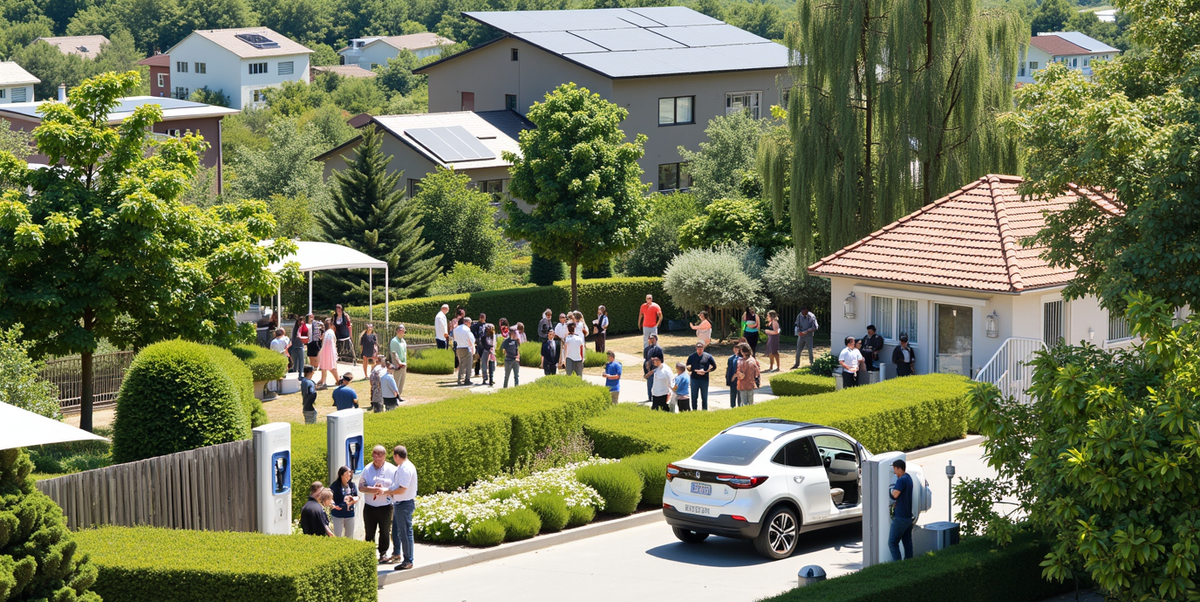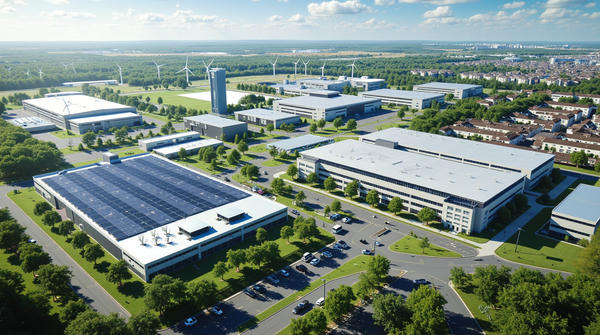Financing Energy Communities: Innovative Models

How can we finance energy communities for a sustainable future?
At WeSmart, our team asks itself a key question every day: how can we democratize access to energy communities while ensuring their economic sustainability? This is at the heart of our mission. We are seeing the emergence of new financial models to support the growth of renewable energies and collective self-consumption. But which ones are really adapted to the needs of communities? And above all, how can we ensure that they benefit producers and consumers alike? 🚀
The main financing models available
Today, several financing models coexist, each offering advantages and limitations depending on the project context.

- Own financing: Today, this model relies heavily on long-term bank loans, which have become a real commodity in the renewable energy sector. Europe's leading banks offer 15- to 25-year financing terms, with competitive rates tailored to the maturity of these projects. This development has democratized access to financing, even if an initial capital contribution is still required. Banks have developed specific expertise in evaluating these projects, making it easier to obtain loans for players presenting solid business plans.
- Third-party investment : The third-party investor model represents an innovative solution in which external investors take over the initial financing of community energy facilities. These investors, often specialized funds or energy companies, make a long-term commitment, generally 15 to 25 years, in exchange for a share of the revenues generated by energy production. This mechanism requires the establishment of fixed- or indexed-price Power Purchase Agreements (PPAs), guaranteeing stable revenues over the duration of the investment.
- Participatory financing: This approach enables citizens to become co-owners of the installations or to lend money at an attractive interest rate. In addition to having a direct impact on their energy consumption, they benefit from a financial return, reinforcing their involvement in the energy transition. Participatory financing represents a powerful lever for energy communities, going beyond the simple financial aspect. This approach democratizes access to renewable energy projects while creating a lasting civic commitment.
Crowdfunding can serve as a strategic complement to traditional financing methods, mobilizing additional financial resources while strengthening the project's local roots. This direct involvement of citizens in financing creates a dual advantage: it provides an alternative source of capital to traditional bank loans, while generating a sense of collective ownership of the project.
Participatory financing is also interesting for its ability to transform consumers into committed players in the energy transition. By becoming co-owners of the installations, citizens are no longer simply passive consumers, but active stakeholders, benefiting directly from the economic spin-offs of their investment.
Collective self-consumption: a lever for profitability

Collective self-consumption, which enables several consumers to share the energy produced locally, offers a unique opportunity to optimize the profitability of projects. In France, for example, energy communities benefit from advantageous selling rates thanks to local sharing models. This enables producers to sell their energy at a better price than on the conventional market, while offering consumers more affordable electricity.
One inspiring example comes from Denmark, where energy communities have played a key role in the development of local wind farms. Citizens are directly involved in financing installations, ensuring competitive prices and reinforcing the social acceptability of projects.
ROI calculation: the example of a shared solar installation
Let's take the concrete example of a 100 kWp solar photovoltaic system installed on the roof of an apartment building:
- Initial investment: €100,000 (approx. €1000/kWp)
- Annual output: 100,000 kWh (average for Central Europe)
- Classic scenario (total resale) :
- Scenario with collective self-consumption :
Collective self-consumption therefore significantly improves the profitability of the project, with a payback time reduced by 40%. What's more, this model offers greater protection against volatile energy prices, since the majority of production is consumed locally at a controlled rate.
These figures can be further optimized by :
- The use of forecasting algorithms to maximize self-consumption
- Setting up collective storage systems
- Aggregation of several plants to optimize maintenance costs
Innovative financing models
A new model is emerging, combining the technical expertise of energy community players with the know-how of financial institutions. This hybrid approach maximizes the benefits of each model while minimizing their respective limitations.
In this model, a company specializing in energy communities partners with a major financial institution to create a customized financing structure. This collaboration enables :
- Reduce financial risks: The energy company's technical expertise enables better risk assessment and management, leading to more advantageous interest rates.
- Optimize financial structure: Intelligent combination of traditional bank loans, participatory investment and public funding.
- Facilitating access to financing: Creation of a "one-stop shop" where communities can obtain both technical expertise and financing.
- Standardizing processes: Development of standardized procedures for project evaluation and financing, reducing transaction costs.
This hybrid model also enables a "revolving fund" to be set up, where revenues generated by the first projects are reinvested in new initiatives, creating a virtuous circle for the development of community-based renewable energies.
An innovative partnership: WeSmart and Belfius 🌱
In Belgium, the partnership between WeSmart and Belfius is a perfect example of how financing can catalyze the development of energy communities. Belfius offers financing solutions tailored to renewable projects, enabling energy communities to maximize their production capacity. By making these projects accessible, this type of partnership encourages a win-win model for producers and consumers: more green energy, less dependence on fossil fuels, and local economic returns.
The press release announcing this strategic partnership highlights the importance of price stability in the development of renewable energy projects. Indeed, one of the main obstacles facing renewable project developers is the volatility of market energy prices.
WeSmart and Belfius have developed innovative financial models that guarantee a stable long-term price for community energy sharing. This price stability is crucial because it :
- Facilitates long-term financial planning of projects
- Reduces risk for investors and developers
- Allows community members to benefit from predictable rates
- Makes renewable energy projects more attractive to financiers
Thanks to these price stabilization mechanisms, energy communities can develop on solid economic foundations, without being subject to the sometimes brutal fluctuations of the energy market. This innovative approach demonstrates how collaboration between a scale-up specialized in energy and a major financial institution can help remove one of the main obstacles to the development of renewable energies.
What challenges remain?
Despite these advances, a number of challenges remain. Legislative frameworks vary from country to country, sometimes making it difficult to implement cross-border projects. What's more, certain types of funding require technical and financial expertise that not all communities possess. Access to European funds, such as the Horizon Europe program, could play a key role in overcoming these obstacles.
Towards a collaborative future
Energy community financing models are not just technical or economic solutions. They represent a real opportunity to rethink the way we produce and consume energy, placing collaboration at the heart of the process. What about you? Which models seem to you the most promising for accelerating the energy transition while promoting inclusion? Have your say and join the debate!






